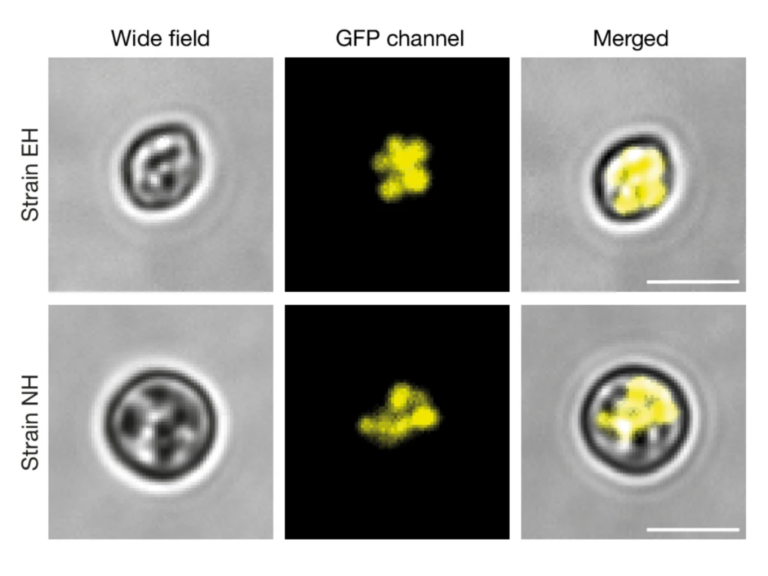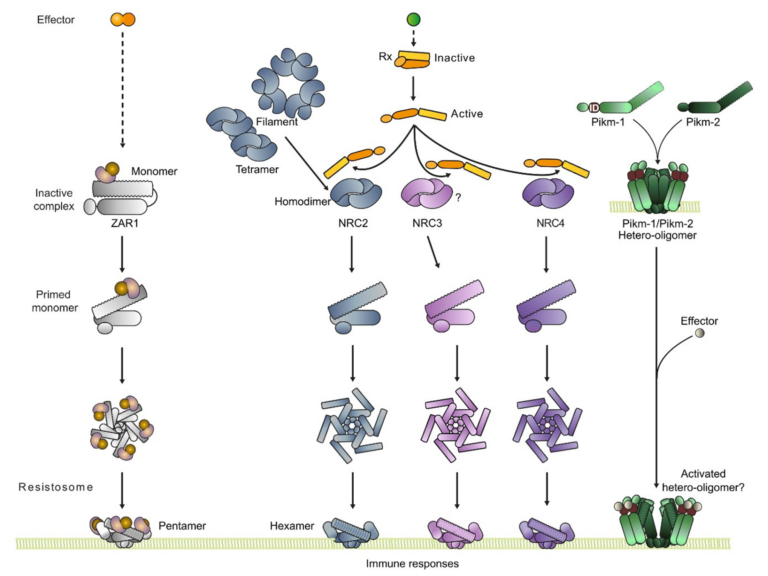Clathrin-mediated endocytosis facilitates the internalization of Magnaporthe oryzae effectors into rice cells
Fungi and oomycetes deliver effectors into living plant cells to suppress defenses and control plant processes needed for infection. Little is known about the mechanism by which these pathogens translocate effector proteins across the plasma membrane into the plant cytoplasm. The blast fungus Magnaporthe oryzae secretes cytoplasmic effectors into a specialized biotrophic interfacial complex (BIC) before translocation. Here we show that cytoplasmic effectors within BICs are packaged into punctate membranous effector compartments that are occasionally observed in the host cytoplasm. Live cell imaging with fluorescently labeled proteins in rice (Oryza sativa) showed that these effector puncta colocalize with the plant plasma membrane and with CLATHRIN LIGHT CHAIN 1, a component of clathrin-mediated endocytosis (CME). Inhibiting CME using virus-induced gene silencing and chemical treatments resulted in cytoplasmic effectors in swollen BICs lacking effector puncta. By contrast, fluorescent marker co-localization, gene silencing and chemical inhibitor studies failed to support a major role for clathrin-independent endocytosis in effector translocation. Effector localization patterns indicated that cytoplasmic effector translocation occurs underneath appressoria before invasive hyphal growth. Taken together, this study provides evidence that cytoplasmic effector translocation is mediated by clathrin-mediated endocytosis in BICs and suggests a role for M. oryzae effectors in co-opting plant endocytosis.


